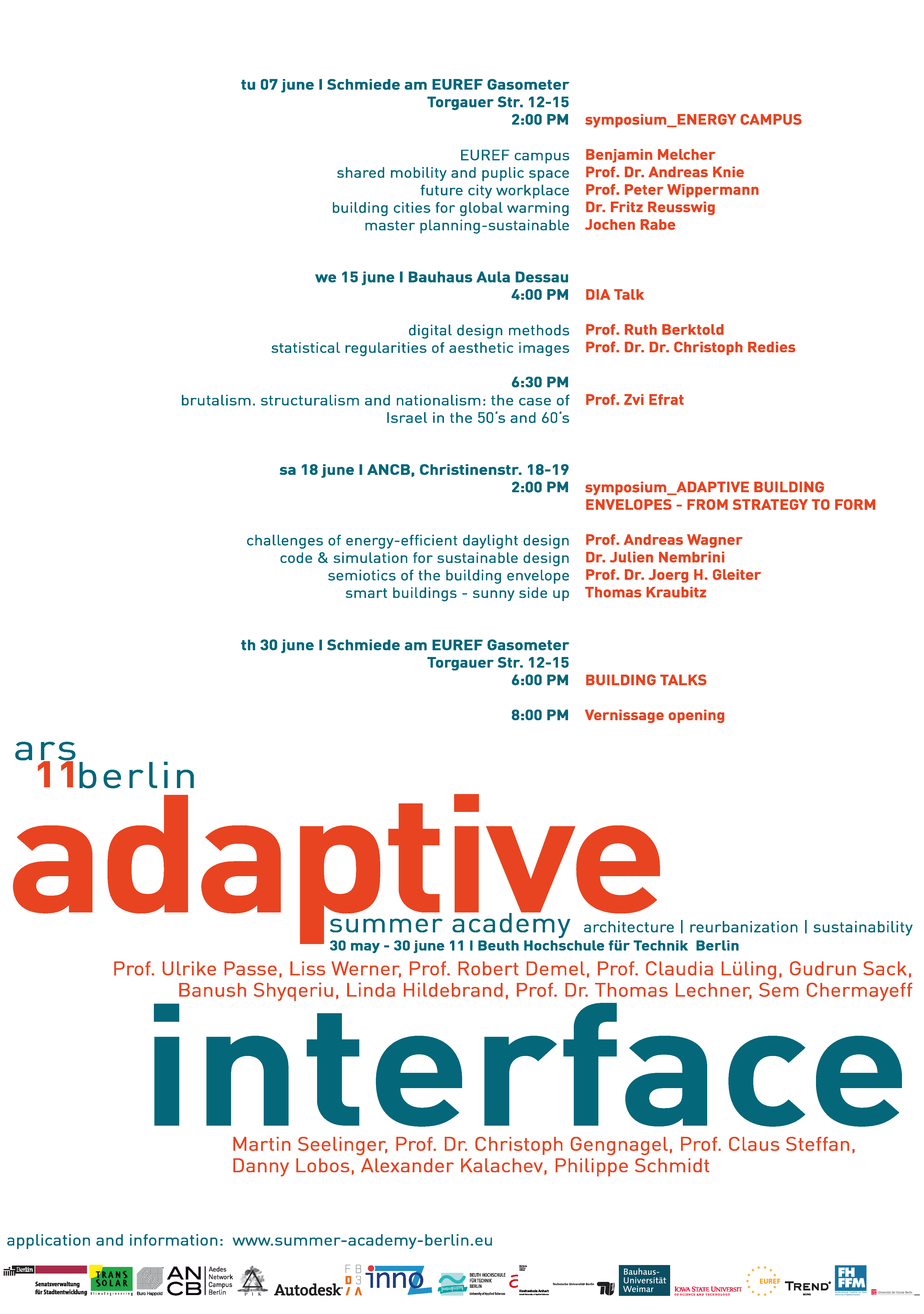
This summer’s workshop is seeking to research and apply parameters to design a building envelope in relationship to the context of the building. The challenge of climate change will above all become the key parameter to be taken into consideration. This will be within the context of understanding and interpreting public space, circulation on the urban level as well as a feature to structure and organize the building itself. Equally Janus like the question has to be solved how the building is to be understood, as an object or part of the boundary of the urban space.
Space, separated from the environment, always came along with the benefit of physical comfort. The effort of building walls, roofs, doors and openings offered the opportunity to create space controlled and manipulated by men. Even though the skin of the human body, like no other intelligent device is able to adapt to numerous conditions, hot and cold, dry and humid, adapting to a much broader range of conditions and levels of comfort came along with clothing and building.
With global warming in mind the programming of the buildings envelope meets new challenges. As Stephane Hallegatte, a French meteorologist outlined; building for one climate is no longer the question, instead planning, with the lifespan of a building in mind, the building needs to be able to adapt. Building with two climate conditions in mind is at stake.
The Berlin urban fabric, very much was developed following the changes introduced by energy driven technical innovations like James Watt’s steam machine or Thomas Edison’s light bulb, just to name two. The building typology, developed along pattern books and best practice approaches, proves even today to be able to accommodate multiple tints of work - living scenarios. This is not to say that this outcome was planned, rather that we are able to evaluate today which of these components will suite sustainable standards.
Much like Aldo Rossi outlined it in his book L'architettura della città the shape of the city depends on the buildings impact on the public space more so after the program of the building is long surpassed. The boundary of the building reflects the buildings position within the urban context and likewise as a function of circulation and excluded space. This Janus like phenomena, the orientation towards the inside and the outside, the idea of separation and connection offers a unique field of research to explore the in-between.
We will elaborate on the bases of the current design proposal for the European Energy Forum, EUREF in Berlin. Following the tradition of the site, a think tank and platform to research and develop solutions providing energy and mobility for the future is about to crystalize. For one, the first carbon neutral commercial development in Berlin will be built there.
The current concept for the site, works as a hypotheses to be challenged and explored in respect to undiscovered potentials and opportunities.

